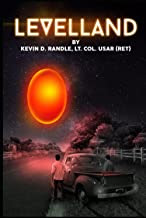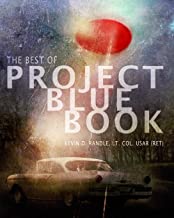You’re
probably wondering what swallowing spiders in your sleep has to do with UFOs
and the answer, simply, is “Nothing.”
 |
| A really ugly spider, much to big to swallow. |
It
is the research behind attempting to learn where this “fact” originated that is
of importance here. Tyler Adkisson of Newsy, decided to learn where this idea
originated because, apparently, he found it improbable that people swallow
spiders in their sleep. He noted that there were only a few ways that it could
happen, such as the spider using its silk to parachute into a sleeping person’s
mouth, but a biochemist in Australia thought that you’d have to be really
unlucky for that to happen. You can read Adkisson’s article here:
So,
unhappy with the theory, Adkisson wondered where the idea came from. The most
often cited source for the tale was Snopes (which describes itself as the
definitive fact-checking website for, well, basically, checking facts, urban
legends, myths and folklore). Adkisson reported, “It [Snopes] claims in 1993, a writer named Lisa Holst
wrote an article for PC Professional about misnomers circulated via email. To
prove her point, in the article she included the eating-spiders myth.
Ironically, that became ‘one of the most widely-circulated bits of
misinformation ... on the Internet.’”
The fact was supposed to have come from a
book, Insect Fact and Folklore that
was published in 1954. The book has no section on spiders (which, by the way,
aren’t insects… I mention this so you all know that I was paying attention),
and the sleeping human eating spiders fact is not in there.
Further chasing of the footnote (sorry, but
this is, in essence, what chasing footnotes is all about), someone asked about
the magazine, PC Professional. The
Library of Congress could find no reference to it… and, in fact, no one could
find the writer, Lisa Birgit Holst either.
Adkission’s conclusion is that we don’t
have to worry about eating spiders in our sleep but mine is that we take too
much information we read as accurate without question. In the world today, with
the Internet available, we can all check out the dubious facts we read about or
hear about. The information is there and often we can attempt to trace it to
its source… and if the source is not credible then neither is the information.
And if the source is found to be nonexistent, then that would be the real clue
that the information is bogus… but the point is that we all now have the
capability to attempt to verify what we read or hear, if we only take the time.
Ironically, this was all that I had
intended to post and had even found a picture of a frightening spider to
accompany it, but then, as I was proofreading it, I was struck by the fact that
I hadn’t, well, fact checked it myself. I accepted the information from
Adkission and Snopes without seeing what I might find out, using the Internet
as I had suggested others do.
First, I attempted to find that PC Professional magazine. I found one
called PC Pro, which is a publication
in the United Kingdom. It was created in 1994 and looking at their website, it
doesn’t seem that an article about sleeping humans and spiders would fit into
their publishing philosophy. But then, the original article, as described by
Snopes, seemed to be about debunking Internet rumors rather than actually
making the claim that sleeping people swallowed spiders. That might fit into
their magazine, but I wasn’t going to subscribe to find out. Besides, according
to the available information, the original article was published before the
creation of PC Pro, which rules it
out.
While it seems that there is no American
magazine named PC Professional, there
are two in Europe… or possibly only one. PC
Professionell is listed in some locations as a German magazine and in
others as Dutch. It probably is the same magazine. Anyway, at The Mclovin Times found at:
there was this comment, which is relevant
to our discussion:
The closest anyone seems to have come to finding this
mysterious PC Professional is a German magazine called PC Professionell .
However, commenter Zagrobelny said:
"I placed an interlibrary loan request for the article
with the Snopes information from the German magazine PC Professionell. I work
in an American library, so only two German libraries were available as lenders
through OCLC. (Why? I have no idea.) Those two libraries both reported that the
Holst article was "not found as cited", meaning it's not in that
issue of PC Professionell. Does it mean that it does not exist or does it mean
Snopes has some part of their citation wrong? I don't know, but now I'm more
inclined to think this is mistake or copyright trap by Snopes or whoever wrote
that particular entry."
There is more information available on all
of this. For those who wish to follow more of the trail, you can find that addition
information here:
and
here:
It seems that all this research has taken
me back to the original source, which is the Snopes article but I can’t find
anything else. There are hints in the various forums about other sources, but
no one else has found them either. While there are magazines around the world
with names similar to PC Professional,
none of them have an employee, writer or editor with the name of Lisa Birgit
Holst and none of them have ever published an article about people swallowing
spiders in their sleep.
I believe the final nail in the coffin is
that Lisa Brigit Holst is an anagram for “This is a big troll.” That is just
too much of a coincidence. That, I believe, is the stake in the heart of this
story. It goes back to Snopes and no further and some have suggested that
Snopes invented the tale so that they could debunk it. Or to see who was
stealing their stuff without proper credit.
Remember that commercial when the women
said, “They can’t put anything on the Internet that isn’t true.”? Well, this
proves that statement to be false in a rather left-handed way. Snopes did put
something on the Internet that was true, that is, the myth that people
swallowed spiders was untrue and that morphed into the idea that people do
swallow spiders. Others then put the false story on the Internet.
My point is that we have followed this as
far as we can, we have looked at cited sources and found them wanting, have
looked for the writer and not found her, and we have found nothing that we can
confirm that predates Snopes article. We did learn that people don’t swallow
spiders and that the Internet did help us resolve the problem.





















2 comments:
This reminds me of that "black eyed kids" tripe that started out as a transparent bit of hokum, but has developed into the topic of books by authors who really should know better. For a few years, one could easily trace the origin of the myth to a self-proclaimed "journalist" who actually had more bona fides as a fiction writer, though that isn't saying much. Pretty much everyone seemed to take the story, which read like a fairly good high school creative writing project, at face value and would parrot the "fact" that it was written by a journalist, even though it was easy to check.
The last time I tried to trace the story to its origins, the whole topic was hopelessly muddled by credulous people endlessly quoting one another all over the internet. I saw several later posts from anonymous "witnesses" whose writing sounded an awful lot like the originator of the myth. There was very little variation in the narratives. It's easy to imagine the "journalist" carefully manipulating the story, no doubt just for the hell of it.
Can people swallow spiders? At least one baby did. From Newspaper.com, July 17, 1933, Garrett Clipper from Garrett, Indiana · Page 4:
"A spider crawled through the open mouth and into the stomach of the baby son of Mr. and Mrs. George Brown of Brazil. Ind.. while the child was asleep in the shade of a tree near their home. The child became ill and a physician was called. The spider, still intact, was removed."
Kind of hard to see the whole logic of this. Did they watch to see if it crawled into the mouth or did the baby just eat it because it was hungry.
The July 8, 1933 Daily Banner, Greencastle, Indiana from Newspaper.com has other details of the same case.
So although it seems unlikely to happen, it can happen. But this is a far cry from 8 spiders a year.
In “Clinical psychopathology”, 1978, Volume 4, page 257, a psychological background to the whole thing is obvious which touches some innate fear in some people.
https://books.google.com/books?id=3_5rAAAAMAAJ&q=insect+folklore+spider
“Many patients are inordinately frightened of .. spiders.. falling into their mouths during sleep.”
But 8 spiders a year? How do you even measure this? How does one measure if the spider goes down the throat into the stomach rather than inhaling it into the lungs? Maybe just “going into the mouth” is what they really mean.
If one arm-waves a little, it does sound like something a university or the EPA might measure indirectly. For instance, to measure indoor air quality, a scientist or grad student might build a fan with a filter and suck the air into an intake nozzle (not a human mouth) at a certain speed. At the end of a time period, they would examine the filter and count the particulates (dust, dirt, pollen, insect parts and/or spiders). Live spiders might run away after the air pressure has stopped or if the air pressure was not strong enough to begin with. So, they would likely only count dead spiders. Some student would be surprised and say that “Hey, here’s a spider, if that nozzle had been a person’s mouth and they slept with their mouth open, then that spider would have gotten into their mouth!”. Some student would have extrapolated the data and gotten 8 spiders a year since it is unlikely they ran the test for one year. This would have made a sensational presentation in college. This is all speculation of course. How many grad or undergrad student presentations for classes get published or on the Internet? Not many I suspect.
I could not find an EPA test or grad student test/lab/study on the topic. The only mention that is relevant is from the Cornell Engineer by "Margot A.S. Vigeant" from April 1992, page 60.
https://books.google.com/books?id=x6lTAAAAYAAJ&focus=searchwithinvolume&q=swallows
https://babel.hathitrust.org/cgi/pt?id=coo.31924063532463;view=1up;seq=7
“The average person swallows eight spiders while sleeping, in their lifetime”
It may have been fiction from her inventive mind or maybe she heard some rumors of a test in the university. I don’t know.
But surprisingly she became a professor and still works in academia.
https://www.bucknell.edu/academics/engineering-college-of/academic-departments/chemical-engineering/faculty-and-staff/margot-a-s-vigeant
It would be interesting to see how she came up with the idea, whether it was fiction or nonfiction.
Post a Comment